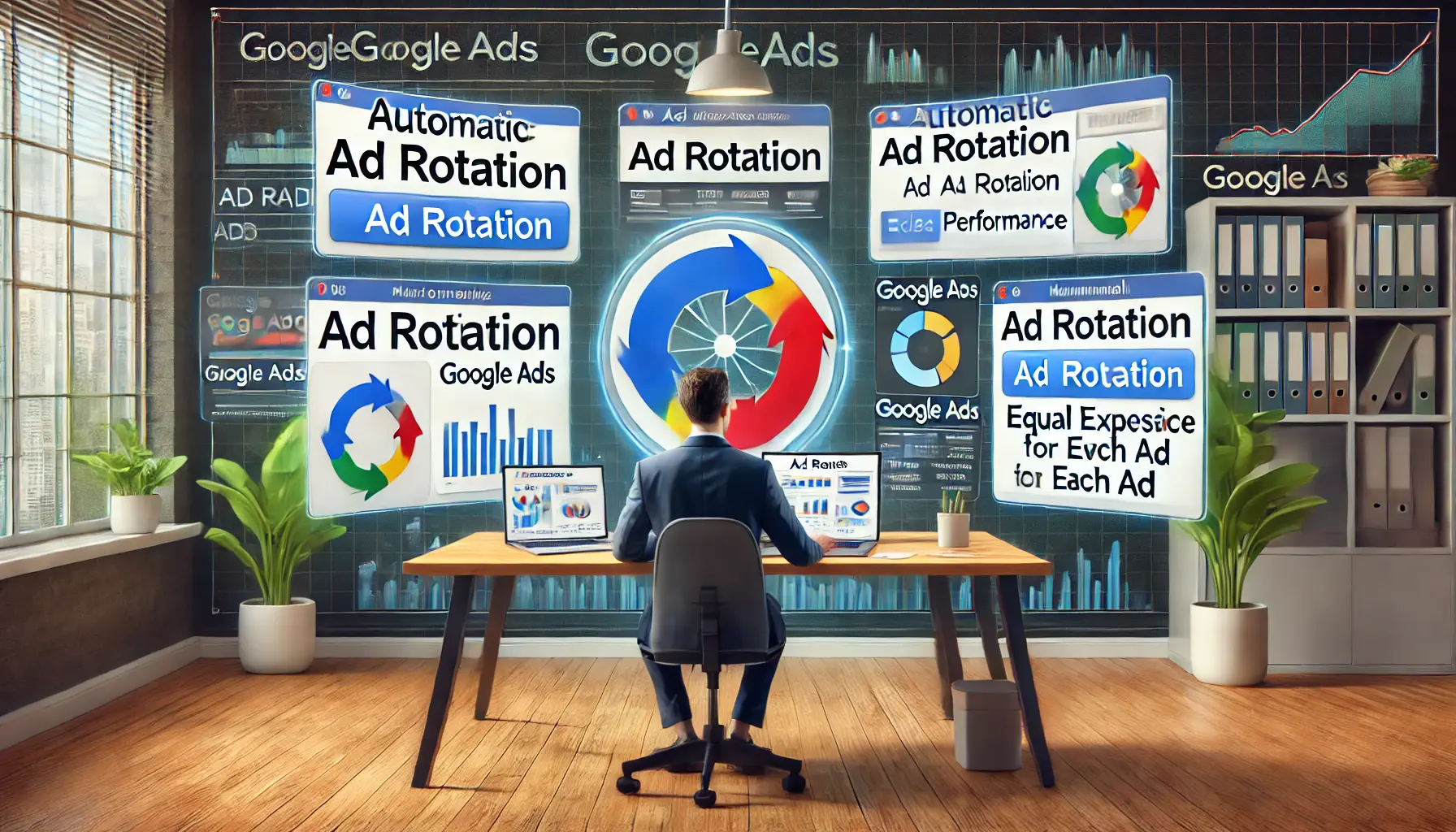It has become increasingly important to run effective display advertisements as a way to capture the audience’s attention in the competitive world of digital marketing.
However, building good-looking ads is just the first step in ensuring your campaign’s success; proper testing methods are essential.
By testing different strategies, creatives, and audiences, you can understand what works best for your target audience and further optimize your campaigns for better performance.
This article explores the top five testing methods you can use to create more effective display ads, starting with understanding the importance of testing.
- Understanding the Importance of Testing in Display Ads
- A/B Testing for Precise Ad Optimization
- Multivariate Testing for Comprehensive Insights
- Ad Rotation and Experimentation Techniques
- Using Audience Segmentation for Targeted Testing
- Conclusion: Mastering Testing Methods for Effective Display Ads
- Frequently Asked Questions About Testing Methods for Effective Display Ads
Understanding the Importance of Testing in Display Ads
Testing is the backbone of any successful advertising campaign.
It enables you to take the guesswork out of the process and rely on data-driven decisions as a marketer.
By testing display ads effectively, you can identify what works and what doesn’t, laying the foundation for optimizing your campaigns for better performance and return on investment.
But why is testing so crucial?
Display ads are not a one-size-fits-all solution.
Every audience reacts differently to colors, messages, and calls-to-action.
Without testing, you could waste valuable ad spend on strategies that fail to connect with your audience.
Testing helps uncover audience preferences, ensuring that your ads resonate with them and encourage engagement.

A workspace symbolizing the critical role of testing in optimizing display ad success.
Why Testing is Essential for Display Ads Success
Imagine running a display ad campaign without testing.
You might get lucky, and it could work, but how would you know if another approach might have worked even better?
Testing removes the guesswork.
By experimenting with visuals, headlines, and ad placements, you’ll know exactly what drives conversions and engagement.
Consistent testing also ensures your ads remain relevant over time.
Audience preferences can change, and digital marketing trends evolve quickly.
Testing helps you stay ahead of these shifts, ensuring your campaigns adapt to the dynamic nature of online advertising.

A workspace illustrating the importance of data in optimizing display ads.
The Role of Data in Display Ads Optimization
Data is at the core of any testing approach.
Without it, making informed decisions about display ads is nearly impossible.
Analytics platforms allow you to track key performance indicators (KPIs), such as click-through rates (CTR), conversion rates, and cost per acquisition (CPA).
These metrics provide a clear picture of where an ad might be underperforming and where adjustments are needed.
For example, if your ad has a high impression rate but a low CTR, it may indicate that the creative is not engaging enough.
Alternatively, a high CTR but low conversions might point to a mismatch between the ad content and the landing page.
Testing enables you to identify and address such discrepancies effectively.

A workspace showcasing the analysis of key metrics for display ad testing.
Key Metrics to Measure During Testing
Testing display ads requires focusing on the right metrics to gain meaningful insights.
Here are some key KPIs to track:
- Click-Through Rate (CTR): Indicates how many users clicked on your ad compared to the total number of impressions.
- Conversion Rate: Measures the percentage of users who completed a desired action, such as making a purchase or signing up.
- Cost Per Click (CPC): Represents the amount paid for each click on your ad.
- Return on Ad Spend (ROAS): Evaluates the revenue generated compared to your ad spend.
- Engagement Rate: Tracks interactions such as video views or likes, depending on the ad format.
These metrics will help you determine which elements of your display ads are working and which need improvement.

A workspace depicting the challenges and frustrations of common ad testing pitfalls.
Common Pitfalls in Ad Testing to Avoid
While testing is invaluable, it comes with its own challenges.
One common mistake is testing too many variables at once.
Changing multiple elements in a single test makes it difficult to determine which adjustment led to the observed results.
Focus on testing one variable at a time, such as the headline or the call-to-action, to ensure clarity in your findings.
Another mistake is running tests for too short a duration.
Testing requires sufficient data to draw reliable conclusions.
Ending a test prematurely can lead to inaccurate assumptions and misguided campaign adjustments.
Finally, neglecting your audience’s preferences can undermine your testing strategy.
Your audience’s behavior should guide your testing efforts.
Regularly revisit your audience insights and update your testing methods accordingly.
By understanding the importance of testing and applying it strategically, you can lay the foundation for creating effective display ads that deliver measurable results.
Next, we’ll explore one of the most popular testing methods: A/B testingA method of comparing two versions of an element to determine which performs better..
Testing is the cornerstone of successful advertising campaigns, allowing marketers to make data-driven decisions and optimize performance effectively.

A workspace showcasing the process of A/B testing to optimize display ads.
A/B Testing for Precise Ad Optimization
A/B testing, also known as split testing, is one of the most widely used and effective testing methods in digital marketing.
This method involves comparing two variations of a single ad element to determine which performs better.
By isolating a specific variable, such as the headline, image, or call-to-action, A/B testing provides precise insights into what resonates most with your audience.
Implementing A/B testing in your display ads helps you make data-driven decisions and avoid assumptions that could lead to wasted ad spend.
It ensures your campaigns are optimized for engagement, clicks, and conversions.
Let’s break down how you can execute A/B testing effectively.

A workspace demonstrating the process of A/B testing to optimize digital ads.
What is A/B Testing and How Does It Work?
A/B testing is one of the easiest yet most effective ways to improve your display ads.
In A/B testing, two versions of an ad—Ad A and Ad B—are simultaneously shown to your target audience.
Subsequently, their performance is measured on certain key metrics, such as click-through rate (CTR), conversion rateThe percentage of users who completed a desired action, like making a purchase or signing up, out of the total users who clicked on the ad., or engagement rate.
The version with better performance is considered more effective.
For example, you might test two different headlines for the same display ad.
Ad A could use a question-based headline, while Ad B employs a benefit-focused statement.
By monitoring the results, you can determine which headline drives more clicks or conversions.

A workspace showcasing the strategic steps of implementing A/B testing for display ad optimization.
Steps to Implement A/B Testing for Display Ads
To conduct successful A/B testing, follow these steps:
- Define Your Goal: Identify the specific objective of your test, such as increasing CTR or reducing cost per acquisition (CPA).
- Choose a Variable to Test: Focus on a single element, such as the image, headline, or ad placement, to isolate its impact.
- Create Two Variations: Develop two versions of your ad with only one variable changed.
- Run the Test: Launch the variations simultaneously to the same audience segment under similar conditions.
- Analyze the Results: Use analytics tools to measure performance against your chosen metrics.
- Implement the Winner: Incorporate the best-performing variation into your campaign and apply the insights for future tests.
By following these steps, you can ensure that your A/B testing is systematic and yields actionable insights.

A workspace illustrating common mistakes and frustrations encountered during A/B testing for display ads.
Common Mistakes in A/B Testing
While A/B testing is theoretically simple, several pitfalls can make it less effective:
- Testing Too Many Variables: Changing several elements at once makes it difficult to identify which change influenced the results.
- Insufficient Sample Size: Running tests with too few impressions or clicks can lead to unreliable conclusions.
- Ending Tests Too Early: Concluding tests before gathering enough data can result in inaccurate findings.
- Ignoring Seasonal Trends: Running tests during atypical periods, such as holidays, can skew results.
Avoiding these mistakes ensures that your A/B testing efforts are both reliable and impactful.

A workspace showcasing the effective interpretation of A/B testing results to optimize digital ads.
Interpreting A/B Testing Results Effectively
Once your A/B test is complete, it’s time to analyze the results.
Focus on the metrics that align with your campaign goals.
For example, if your goal was to increase conversions, prioritize the variation that had the higher conversion rate, even if its CTR was slightly lower.
Statistical significance is another important factor.
Use tools like Google Optimize or other statistical calculators to ensure the performance difference between variations is not due to random chance.
This helps you make confident decisions based on your test results.
Keep in mind that A/B testing is not a one-time process.
It is an ongoing effort of testing new variables and refining your ads to align with evolving audience preferences.
By mastering A/B testing, you can create display ads that consistently deliver optimal results.
A/B testing is a straightforward yet powerful method to optimize display ads by comparing two variations to determine what works best.

A workspace illustrating the process of multivariate testing to gain comprehensive insights for display ads optimization.
Multivariate Testing for Comprehensive Insights
Whereas A/B testing takes the approach of testing one variable at a time, multivariate testingA method of testing multiple variables and their combinations simultaneously to identify the best-performing setup. takes a broader approach, testing several variables simultaneously.
This allows you to understand not only which individual elements perform best but also how those combinations work together.
Additionally, you can gain valuable insights into how display ad headlines, images, colors, and calls-to-action interact to influence audience behavior.
When speed is a priority, and you want to evaluate the interaction between different variables to optimize display ads, multivariate testing is preferred.
However, this method requires larger sample sizes to achieve statistical significance.
Let’s dive deeper into how multivariate testing works and the benefits it provides for display ads.

A workspace demonstrating the difference between A/B testing and multivariate testing in digital marketing.
How Multivariate Testing Differs from A/B Testing
Unlike A/B testing, which compares two versions of a single variable, multivariate testing evaluates multiple variables and their combinations within the same test.
For instance, instead of testing just two different headlines, multivariate testing might evaluate several headlines along with variations of images and calls-to-action.
This helps you find the best combination that works for your campaign.
For example, in a display ad campaign, you might test:
- Three different headlines
- Two distinct images
- Two variations of call-to-action buttons
Multivariate testing would create all possible combinations of these elements and measure their performance to identify the optimal setup.

A workspace illustrating the process of setting up multivariate testing for optimizing display ads.
Setting Up Multivariate Testing for Display Ads
To conduct a successful multivariate test, follow these steps:
- Identify the Variables: Choose the specific elements of your display ads you want to test, such as visuals, text, or calls-to-action.
- Create Variations: Develop multiple versions of your variables. For example, create three headline variations, two imagery variations, and two calls-to-action variations.
- Generate Combinations: Use tools like Google Ads Experiments or specialized multivariate testing platforms to generate all possible combinations of your variables.
- Run the Test: Launch these ad combinations to a sufficiently large audience to gather reliable data.
- Analyze Results: Use analytics tools to determine which combination of variables delivers the best performance based on your campaign goals.
By following these steps, you can effectively leverage multivariate testing to optimize your display ads.

A workspace illustrating the use of tools like Google Optimize, Optimizely, and VWO for effective multivariate testing of display ads.
Tools for Effective Multivariate Testing
Several tools can help you execute multivariate testing seamlessly:
- Google Optimize: A free tool that integrates with Google Ads and Analytics for testing ad variations.
- Optimizely: A paid platform offering advanced multivariate testing capabilities.
- VWO (Visual Website Optimizer): A user-friendly tool for creating and analyzing multivariate tests.
These tools streamline the testing process and provide actionable insights to enhance your display ads.

A workspace illustrating the analysis of multivariate testing results to evaluate ad performance.
Analyzing Results from Multivariate Testing
After your test is complete, analyze the performance of each combination to identify trends and actionable insights.
Pay particular attention to metrics such as click-through rate (CTR), conversion rate, and return on ad spend (ROAS).
Additionally, ensure statistical significance to confirm that the results are not due to random chance.
Multivariate testing also provides valuable insights into audience preferences.
For example, you might discover that certain colors resonate more with your target audience or that a specific headline and image combination drives higher engagement.
Use these insights to refine your ad strategy and improve future campaigns.

A workspace illustrating the decision-making process of choosing between A/B testing and multivariate testing for ad optimization.
When to Use Multivariate Testing Over A/B Testing
Multivariate testing is ideal for campaigns that involve multiple elements and require a deeper understanding of how these elements interact.
Use this method when:
- You have a large audience size to ensure reliable results.
- You need to optimize complex ads with several variables.
- You want to understand how different ad components work together.
By selecting the appropriate testing methodology aligned with your campaign goals, you can design display ads that consistently deliver the best results.
Multivariate testing evaluates combinations of ad variables, offering deeper insights into their interactions and optimal setups.

A workspace illustrating ad rotation and experimentation techniques to optimize digital ads.
Ad Rotation and Experimentation Techniques
Ad rotation and experimentation techniques are critical for maximizing the performance of your display ad campaigns.
By rotating different ad variations and experimenting with their settings, you can identify what resonates most with your audience while keeping your ads fresh and engaging.
This approach allows you to test multiple creatives, formats, and placements effectively, ensuring your campaigns remain optimized and relevant.
Ad rotation refers to the process of displaying multiple ad variations within a single campaign.
Platforms like Google Ads offer options for automated and manual ad rotationThe process of alternating different ad variations within a single campaign to optimize performance., providing flexibility in how you test and experiment with your ads.
Let’s explore how you can implement ad rotation and experimentation techniques to boost your campaign results.

A workspace illustrating the process of setting up and understanding ad rotation in Google Ads.
Understanding Ad Rotation in Google Ads
Google Ads gives you options to control how ads are served.
The main ad rotation settings include:
- Optimize: Google Ads automatically favors the ads that are predicted to perform better according to metrics such as click-through rate (CTR) or conversions.
- Do Not Optimize: The system rotates ads evenly regardless of performance and gives them equal exposure to each variation.
The optimized setting is ideal for campaigns focused on achieving immediate results, while the “Do Not Optimize” setting is better suited for experimentation and collecting unbiased performance data.

A workspace illustrating the dynamic process of ad experimentation for better performance.
Dynamic Ad Experimentation for Better Performance
With dynamic ad experimentation, the system dynamically tests a selection of various elements across a few ad variants and identifies which ad components perform better.
You can experiment with headlines, descriptions, images, or calls-to-action to determine what yields the desired results.
Automated platforms utilize these elements in various combinations tailored to your audiences and placements.
Dynamic experimentation allows for greater efficiency, as the system tests and optimizes your ads in real-time.
By leveraging automation, you can scale your experiments without the need for constant manual intervention.

A workspace demonstrating the benefits of manual and automated ad rotation in digital marketing.
The Benefits of Manual vs. Automated Ad Rotation
Choosing between manual and automated ad rotation depends on your campaign objectives and resources:
- Manual Ad Rotation: Offers complete control over how ads are served. This is ideal for campaigns where you want to collect unbiased data or test specific variables yourself.
- Automated Ad Rotation: Uses machine learning to optimize ad delivery. This is great for campaigns focused on achieving quick, data-driven results with minimal effort.
By understanding the strengths of each approach, you can select the one that aligns best with your testing and optimization goals.

A workspace illustrating the process of testing multiple creatives and formats for digital ads.
Testing Multiple Creatives and Formats
Experimenting with various ad creatives and formats is essential for identifying what resonates most with your target audience.
Some elements to test include:
- Different ad sizes and dimensions
- Static images vs. animated or video ads
- Headline and description variations
- Color schemes and branding elements
By systematically testing these components, you can refine your creative strategy and produce ads that deliver higher engagement and conversions.

A workspace illustrating the best practices for optimizing ad rotation in digital marketing campaigns.
Best Practices for Ad Rotation Optimization
To make the most of ad rotation and experimentation techniques, follow these best practices:
- Set Clear Objectives: Define specific goals, such as improving CTR, increasing conversions, or reducing cost per acquisition (CPA).
- Monitor Performance: Use analytics tools to monitor the performance of each ad variation and identify trends.
- Limit Variables: Test only one or two elements at a time to ensure clear, actionable insights.
- Refresh Ads Regularly: Keep your campaigns fresh by updating ad creatives periodically based on test results.
- Leverage Automation: Scale your experiments with automated tools and machine learning features.
By following these best practices, you can ensure that ad rotation and experimentation drive meaningful improvements in your campaign performance.
Ad rotation keeps campaigns fresh and engaging, while experimentation ensures you identify what resonates most with your audience.

A workspace showcasing the use of audience segmentation for targeted ad testing in digital marketing.
Using Audience Segmentation for Targeted Testing
One of the most successful ways to add maximum value to your display ads is through audience segmentation.
This involves dividing a target audience into small groups based on demographics, behaviors, interests, or other criteria.
You can then create highly targeted ad campaigns for each segment.
Testing multiple sets in this way allows you to identify which ad worked for which segment, ensuring better performance and return on investment.
Targeted testing through audience segmentation helps ensure that your ad spend is allocated efficiently.
Instead of a one-size-fits-all approach, you can tailor your ads to meet the unique needs and preferences of different audience segments.
Let’s explore how you can use audience segmentation for effective display ad testing.

A workspace showcasing the importance of audience segmentation in optimizing display ads.
Why Audience Segmentation Matters in Display Ads
Audiences differ, and targeting can’t be one-size-fits-all.
Responses to the same ad will vary based on factors such as age, gender, location, interests, and online behaviors.
By tailoring your ads toward these factors, you can improve engagement rates, increase conversions, and reduce wasted ad spend.
For example, an ad promoting athletic gear may perform better with younger, fitness-oriented audiences, while a luxury travel ad may resonate more with affluent individuals in specific regions.
Segmenting your audience allows you to deliver the right message to the right people at the right time.

A workspace demonstrating the process of testing ads on different audience groups to optimize ad performance.
Testing Ads on Specific Audience Groups
Segmented testing involves creating multiple versions of an ad and targeting them to different audience groups.
Here’s how to approach this:
- Identify Key Audience Segments: Use data from analytics platforms, customer surveys, or market research to define your audience segments based on criteria such as age, gender, income, interests, or online behavior.
- Create Tailored Ads: Develop ad variations that address the specific needs, preferences, or pain points of each segment. For example, use different headlines or images for various demographic groups.
- Allocate Budget Strategically: Assign a portion of your ad spend to each segment, ensuring sufficient exposure for meaningful testing results.
- Monitor Performance: Keep track of key performance indicators such as CTR, conversion rate, and engagement metrics for each segment.
- Refine Your Strategy: Use insights from your segmented testing to optimize future campaigns and improve overall performance.

A workspace illustrating the process of leveraging demographic insights to optimize ad testing.
Leveraging Demographic Insights for Testing
Demographic data is a powerful tool for audience segmentation.
Platforms like Google Ads and Facebook Ads Manager provide valuable insights on age, gender, income levels, education, and more.
Use these insights to create demographic-specific ads that speak directly to each group.
For instance, if your product appeals to millennials, focus on ad designs and messaging that align with their values and preferences.
On the other hand, if your audience includes seniors, prioritize clear and simple messaging with a focus on trust and reliability.

A workspace illustrating the role of behavioral targeting in optimizing ad testing.
Behavioral Targeting and Its Role in Testing
Behavioral targeting involves observing audience actions, such as website visits, purchases, or search history, to create highly targeted advertisements.
By understanding the behaviors exhibited by your audience, you can deliver ads that align with their current needs and interests.
For example, a user who recently browsed winter jackets might respond well to an ad showcasing your latest collection of cold-weather gear.
Behavioral targeting enables you to create ads that are timely, relevant, and effective.

A workspace demonstrating the process of avoiding overlapping segments in audience segmentation for ad testing.
Avoiding Overlapping Segments in Testing Strategies
When segmenting your audience, it’s essential to keep your segments mutually exclusive.
Overlapping segments can contaminate data and make it difficult to draw accurate conclusions from testing efforts.
To avoid overlap:
- Clearly define the criteria for each segment.
- Use mutually exclusive rules to assign users to segments.
- Regularly review and refine your overall segmentation strategy based on new data and insights.
Maintaining distinct audience segments ensures more accurate information and allows you to implement super-focused strategies that work.
Segmentation revolutionizes testing for display ads by enabling campaigns tailored to the specific needs of the audience.
When utilized appropriately, it helps optimize ads, improve engagement, and achieve efficient marketing results.
Audience segmentation allows tailored testing, improving engagement and ROI by targeting specific demographics or behaviors.

A workspace illustrating the successful conclusion of mastering testing methods for optimizing display ads.
Conclusion: Mastering Testing Methods for Effective Display Ads
In the fast-paced world of digital marketing, success in display advertising requires more than creativity; it demands data-driven strategies and continual optimization.
Throughout this article, we’ve explored five essential testing methods that empower marketers to enhance their display ad campaigns, achieve better engagement, and maximize ROI.

A workspace demonstrating the role of testing methods in optimizing ad success.
The Role of Testing Methods in Ad Success
Testing methods are the foundation of effective display advertising.
By understanding the importance of testing, businesses can move beyond guesswork and make informed decisions that resonate with their target audience.
Whether it’s through A/B testing, multivariate testing, or segmentation, these methods provide actionable insights that drive meaningful improvements.

A workspace demonstrating the analysis of key takeaways from various testing approaches in digital marketing.
Key Takeaways from Each Testing Approach
- A/B Testing: Perfect for detecting the efficiency of single ad elements by comparing two variations and refining certain aspects of your ads in detail.
- Multivariate Testing: Best for campaigns that require multiple variables, finding which combination yields the best performance.
- Ad Rotation and Experimentation: Keeps your campaigns fresh and engaging by testing a variety of creatives and formats, while applying manual or automated rotation techniques.
- Audience Segmentation: Enables targeted testing by dividing audiences into smaller groups based on demographics or behaviors, tailoring ads for maximum relevance and engagement.

A workspace demonstrating the process of achieving success with targeted display advertising.
Achieving Success with Targeted Display Ads
Generic display advertisements simply don’t work.
The inclusion of comprehensive testing methods ensures that campaigns meet the needs and preferences of specific audience segments.
These strategies not only improve ad performance but also optimize budget usage by focusing on what truly works.
By leveraging tools like Google Ads and analytics platforms, marketers can efficiently execute these testing methods and gain valuable insights into their campaigns.
The ultimate goal is to create ads that not only attract clicks but also deliver conversions, providing measurable success.

A workspace reflecting on the final thoughts and strategic decisions based on testing methods for ad optimization.
Final Thoughts on Testing Methods
Testing methods represent a continuous cycle of learning, iteration, and improvement.
As audience behaviors and preferences evolve, your approach to display advertising must adapt as well.
By consistently implementing the strategies discussed in this article, you can stay ahead of the competition and ensure the longevity of your campaigns.
Incorporate these testing methods into your advertising toolkit, and you’ll be equipped to craft effective display ads that resonate with your audience, maximize engagement, and drive meaningful business results.
Testing methods are essential for crafting successful display ads. Continuously adapt to audience preferences and digital trends to maintain campaign effectiveness.

A workspace demonstrating the analysis of frequently asked questions related to ad testing methods and display ads optimization.
Your campaigns can be managed by an agency specialized in Google Ads, check out our service page.
Frequently Asked Questions About Testing Methods for Effective Display Ads
Below are some commonly asked questions and concise answers about testing methods for optimizing display ads.
These insights will help clarify key concepts and provide additional guidance for creating successful ad campaigns.
Testing methods ensure your ads resonate with the target audience, improve engagement, and maximize ROI by relying on data-driven decisions rather than assumptions, leading to measurable improvements in campaign performance.
A/B testing compares two variations of a single element, while multivariate testing evaluates multiple elements and their combinations, providing insights into the most effective setups for your campaigns.
Audience segmentation divides users based on set criteria, allowing targeted ad testing that enhances relevance and campaign engagement, ultimately improving performance and ROI.
Automated ad rotation is best for achieving quick, data-driven results with minimal effort.
It uses machine learning to optimize ad delivery for maximum impact and efficiency.
Behavioral targeting leverages user actions like browsing or purchasing history to deliver relevant ads.
This approach ensures your ads align with audience needs and increase engagement and conversions.
Key metrics include click-through rate (CTR), conversion rate, cost per acquisition (CPA), and return on ad spend (ROAS).
These provide valuable insights into ad performance and areas for improvement.
To prevent overlap, clearly define criteria for each segment and use mutually exclusive rules.
Regularly review and update your segmentation strategy based on new data to maintain clarity and precision.
Tools like Google Ads Experiments, Google Optimize, and Optimizely are excellent for running A/B and multivariate tests, helping you analyze ad performance and optimize campaigns effectively.












